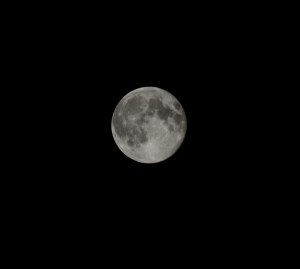
The Lyrids is considered an average shower, but here at Live Seasoned we think all meteor showers are beyond amazing. The Lyrids usually produce about 20 meteors per hour at its peak. It is produced by dust particles left behind by comet C/1861 G1 Thatcher, which was discovered in 1861. The shower runs annually from April 16-25, but we encourage you to venture outside during its peak on the night of the 22nd and morning of the 23rd. These meteors can sometimes produce bright dust trails that last for several seconds. The second quarter moon will be a bit of a problem this year, blocking the less bright meteors from view. The moon basically acts as natural light pollution. Don’t let this deter you though, go find a dark spot sometime after midnight. Lay back on a reclining lawn chair or comfortable blanket and get to gazin’. Meteors will radiate from the constellation Lyra, but can appear anywhere in the sky. Good luck!
For a little bit of background about Lyrid Meteor Shower head here.
The Taos Solar Music Festival is a world class music festival set in a beautiful park in the middle of Taos, New Mexico. In addition to the Festival’s great line‑up, their will be Solar Companies located on Solar Fest grounds, featuring exhibits and demonstrations designed to inform and expose alternative and renewable energy sources and solutions.
(Taken from the event’s website: http://www.solarmusicfest.com/ )
Music in the Mountains presents its critically acclaimed SummerFest concert series from June 11 to July 3 in addition to its extensive Education programs including the awarding winning Young Composers Project. SummerFest concerts have been delighting audiences for 32 years celebrating music from classical to classic rock, jazz, blues and more. Under the stars at the Nevada County Fairgrounds or at select indoor venues.
See the full schedule and learn more at http://musicinthemountains.org/event/summerfest/
Welcome summer!
17 bands playing music from all over the world & admission is FREE. A fantastic main stage line up of Afrofunk Experience original funk and afrobeats, Manzo Rally with new Latin rock music featuring Gaberiel Manzo lead guitarist from Malo with an all star line up, and the legendary motown review Pride and Joy. Music in 13 various stores & restuarants around Telegraph Ave. area. After party at Askenaz.
(Taken from the event’s website: http://www.berkeleyworldmusic.org/ )

Sounds pretty fancy, right? It simply means three solar system bodies coming together, not in distance, but in perspective. For star watchers it means some pretty sweet night sights! It’s particularly exciting when the moon and planets are involved.
Saturday, July 5 will mark the night of the waxing gibbous moon as it groups together with the bluish colored star Spica and separates from Mars in the southwest sky. On July 6 and 7 the planets and moon will seem to cluster together even more than usual in the southern hemisphere for a truly unique sight.
